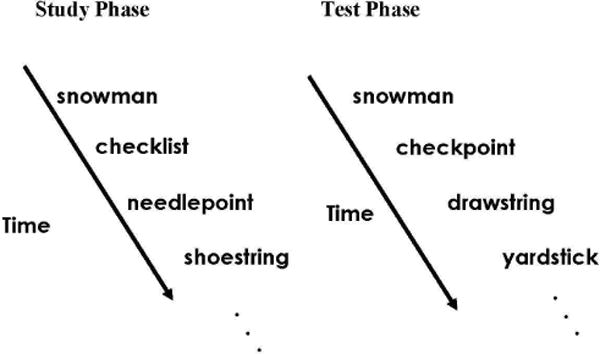Figure 1.

Depiction of experimental protocol (see Methods for details). At study, participants were shown compound words and instructed to judge whether the word was “pleasant” or “unpleasant”. At test, four types of compound words were presented: (i) “intact” words - direct repetitions from the study list, (ii) “conjunction lures” -recombinations of studied stimuli, (iii) “feature lures” – one component taken from a studied word and one component novel, and (iv) “new” words – completely novel stimuli. Participants were asked to decide if each compound word was “old” (i.e., appeared during the study phase) or “new” (i.e., novel). Accurate retrieval was defined as an “old” response to an “intact word” (hit), while false retrieval was defined as an “old” response to either a “conjunction lure” (conjunction false alarm) or a “feature lure” (feature false alarm).
